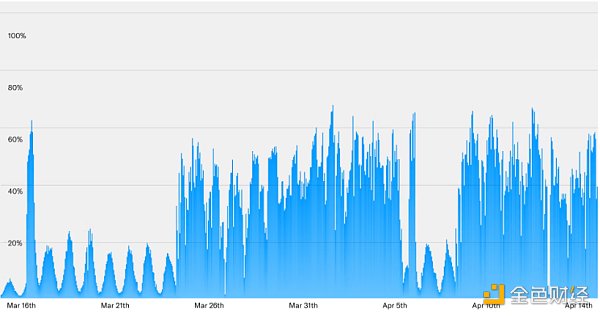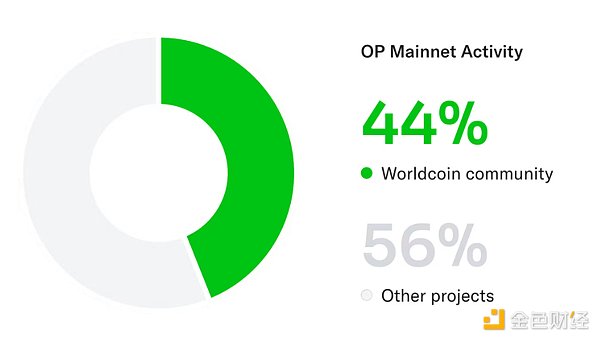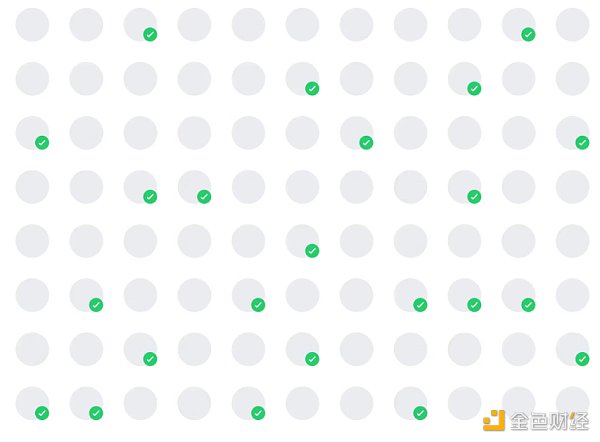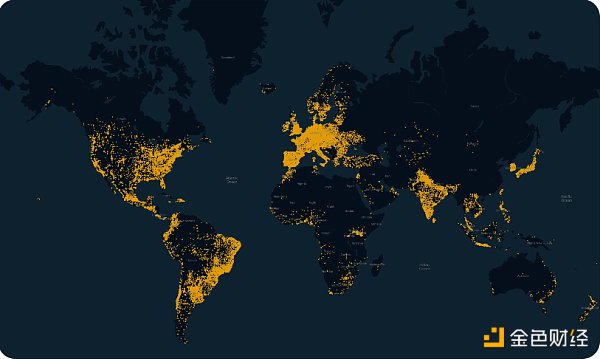Author: Jordan, PANews
After multiple migrations within the Ethereum ecosystem, on the evening of April 17, the crypto project Worldcoin, co-founded by Sam Altman, announced that it would launch its own Layer 2 network: World Chain, which means that Worldcoin can finally find its home in a place where it can expand.
So why did Worldcoin choose to build its own blockchain and enter the slightly crowded L2 track?
The Difficult Road to Scaling the Worldcoin Blockchain
The Worldcoin protocol has always wanted to become the world's largest financial network and identity network and the most inclusive project, but if everyone in the world can easily join, it means that its system needs to be able to support billions of users. From a technical point of view, no blockchain can currently meet the needs of the Worldcoin protocol.
At the end of 2020, the Worldcoin team discovered the Hubble project and began to implement a higher-performance sorter. Hubble's original hybrid zk/optimistic design uses BLS signature aggregation, custom compressed transaction format, and fraud proofs, and successfully supports the World App, an early application developed by the Worldcoin protocol, which expanded to approximately 700,000 users in the Alpha phase.
However, Hubble's design proved to be limited in terms of user and developer experience, because Hubble only allows simple transfers and requires protocol upgrades to add new transaction types, but at this time Worldcoin user needs are no longer just simple holding or sending WLD tokens. World App began by deploying secure accounts for users, providing users with exchange and access to other tokens, and allowing gas-free meta-transactions, so Worldcoin core contributors decided to migrate to the Polygon PoS network, which was the only high-performance and low-cost network in the Ethereum ecosystem at the time.
Time goes forward. In July 2023, shortly before Worldcoin released its beta version, Worldcoin believed that Ethereum Rollup was mature enough and migrated to the OP mainnet. At that time, Worldcoin users had grown to about 2 million, but as the project was launched, Worldcoin soon issued the entire L2 ecosystem. It seems that it is still in its early stages for the Worldcoin project. Many areas in the infrastructure stack still need to be improved, such as the OP mainnet itself, the relayer infrastructure, and the RPC provider.
The migration to L2 also exposed many inefficient on-chain activities. In addition, the recent L2 overall activity solicitation caused the L1 Gas price to rise by more than 20 times for a period of time. Fortunately, Ethereum's "Dencun" upgrade EIP-4844 was released in February 2024, after which Worldcoin users no longer worried about the Gas price issue. However, EIP-4844 did not solve the long-term scalability problem of Ethereum, and the mainnet still needed to undergo a series of long-term improvements such as Danksharding.

Above: The percentage of all Gas used by Worldcoin on the OP main network in the past 30 days

At this stage, Worldcoin user transactions have accounted for 44% of the monthly OP main network activities, and the value will rise to more than 80% during peak periods, and sometimes even exceed the limit. Considering the size and growth rate of the community, it is time for Worldcoin to turn to a dedicated network-World Chain was born.
World Chain: Scaling Worldcoin and L2
At this stage, in order to meet the on-chain needs of Worldcoin, both L1 and L2 need to spend years to make significant improvements. For the Worldcoin Foundation, L2 can be a place for experimentation and innovation. On the other hand, it is a very arduous task to put everyone in the world on the chain, and it is beyond the capacity of any single entity. Therefore, Worldcoin chooses to become part of the Superchain with Optimism, Coinbase, and the broader Ethereum ecosystem to launch a dedicated L2 network: World Chain.
World Chain is a new blockchain designed specifically for humans, open to everyone. Compared with robots, verified humans will have priority in obtaining block space and Gas subsidies for temporary transactions. Everyone can submit transactions to World Chain, but transactions created by humans will be given priority for faster confirmation times. Developers can reach millions of real users around the world by developing applications on World Chain.
In addition, World Chain will be deeply integrated with the Worldcoin protocol and use World ID's personality proof to achieve permissionless and open source goals. The blockchain will eventually be independently managed by the community. According to Worldcoin, the World Chain developer preview will be launched soon and is expected to be fully launched later this summer.
It is worth mentioning that World Chain will not try to cover all possible blockchain use cases. Through World ID's anti-sybil attack capabilities, its goal is to build a decentralized financial and identity application ecosystem focused on the practicality of daily life, and built around Worldcoin, stablecoins, payments, rewards, lending, exchanges, etc.

Above: World Chain users can choose to use World ID to anonymously verify that their addresses are real people, and then obtain priority block space and Gas quota
Worldchain is an OP Stack chain that will focus on scale. The short-term goal is to significantly increase the Gas limit of the L2 blockchain - but it should be noted that this goal has certain risks and cannot be carried out blindly, so Worldcoin decided to do it in a safer way, while meeting application needs by studying the worst performance scenarios.
According to Worldcoin, in addition to improvements in the execution layer, Worldchain will explore alternative data availability (DA) layers, including DA layers similar to Plasma. Although EIP-4844 alleviates the current Ethereum throughput bottleneck, the data availability layer problem may soon reappear. If the scale of Worldcoin users continues to expand in the future, World Chain may need to switch to an alternative DA layer at some point to achieve further growth without burdening users with high fees.

World ChainandSuper ChainHow to achieve a win-win situation?
Choosing OP Stack is actually a "shortcut" for Worldcoin.
By using OP Stack to build shared standard blockchain software, Worldcoin will gain scalability and low-cost advantages, while the Optimism ecosystem will also be able to share a share of the on-chain revenue generated by World Chain, which will be used to fund open source development and other improvements to the network, benefiting both builders and users. This economic model allows the super chain to achieve self-sustaining network value.
By joining the super chain, World Chain will be able to interact with other blockchains such as Base, Mode, OP Mainnet and Zora. Developers who support Worldcoin can continue to contribute directly to the Ethereum network and cooperate with the super chain ecosystem on shared infrastructure. In addition, following the early OP Chains, World Chain also plans to actively participate in the governance of Optimism.
In general, the core of Worldcoin's vision is to promote people all over the world to go online, based on the continuous expansion of the World ID digital identity ecosystem, so that more and more people can contribute to governance, DeFi, social media, games and other aspects. The goal of World Chain is actually very simple, which is to create a scalable and inclusive blockchain future, unlock on-chain identities and build a fairer digital economy for everyone.
 JinseFinance
JinseFinance
 JinseFinance
JinseFinance Huang Bo
Huang Bo Weatherly
Weatherly Xu Lin
Xu Lin Cheng Yuan
Cheng Yuan Bernice
Bernice Coinlive
Coinlive  Catherine
Catherine Catherine
Catherine Cointelegraph
Cointelegraph